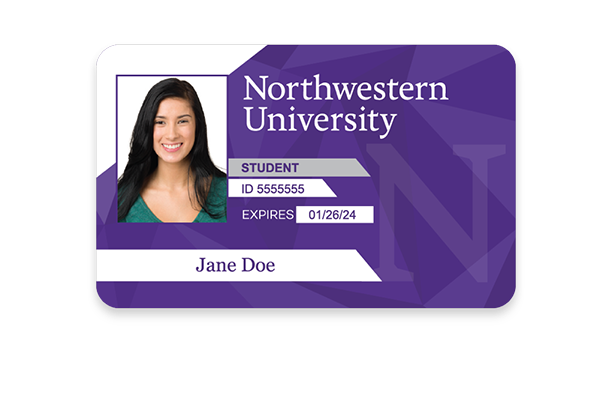
Video game pizza is a platformer, puzzle, and delivery job simulator. It requires players to complete tasks, collect payments, and survive. You will find many hilarious levels and quirky characters in this game. "Why Pizza?" is the perfect physics puzzle game. It is a must-play.
Video game pizza
While pizza and video gaming go hand in hand there are many combinations that can be made. A few of the most interesting combinations involve pizza and video games. Although nausea and vomiting are unlikely outcomes, the combination pizza-video game can be an enjoyable way to spend an evening. Read on for more details.
Many video games feature pizza. Some of these games include role-playing games and make-a-pizza games. These games can be downloaded to your smartphone or tablet. Many apps are available both for Android and iOS.
It's a platformer
Game Pizza is for you if you enjoy visual novels and platformers. The 2D platformer is based on physics and features bosses as well as skeletons and robots. You'll need to run from A-B, collect coins, and avoid obstacles. You'll also find a variety environment, including space or underwater.

Despite the fact that this indie platformer has a delivery simulator feel, it lacks polish. It feels out of place in the marketplace full of hundreds upon hundreds similar games. This means it is less cost-effective.
It's a puzzle game
Puzzles can be described as a game where pieces must be assembled to solve a puzzle. You need knowledge and ingenuity. It's also a great way test your mind. It is important to remember that not all puzzles are created equal.
It's an innovative puzzle game that requires creativity and innovation. There are 27 levels. The game is completely free and has no microtransactions. The voice-guided difficulty levels are simple and understandable by beginners. After clearing each stage, players have the option to skip them and look at their statistics.
It is a simulator for delivery jobs
Game pizza is an online platformer with physics puzzles. It allows players to deliver pizzas. The goal of the game is to deliver the pizzas and collect the money. You will enjoy the cheesy, wonky characters and levels. It also supports multiplayer. You can also play it locally, in addition to the online version.
Epic Games made the game. The company owns the title and logo. Unreal Engine 4 was used for the development of the game. This simulation is realistic and allows for delivery.

It's also a memory game
It's a memory-game where players try and match cards. They must match them by turning around pairs of matching card. This game is also known for Concentration, Pelmanism. Pexeso. Shinkei-suijaku. It aids in memory development and improves focus.
This game is great for children because it helps to increase vocabulary and memory. For children who are learning how to write, this game can also be used as a labelling activity. Children will match pictures with words on another piece. Children will have a diverse experience with the game if they choose different items.
FAQ
Who can homeschool?
Anyone can homeschool. There are no specific qualifications required.
Children can be taught by parents who have graduated high school. Many parents opt to teach their older children at college.
Parents with less formal education can learn how to teach their children.
Parents can become certified teachers after completing certain requirements. These requirements vary by state.
Some states require homeschooled students take a test to graduate. Others do not.
Homeschooling parents need to register their family with local schools.
This process involves filling out paperwork and submitting it to the school board.
After registering, parents will be able to enroll their child in either public or privately-funded schools.
A few states allow parents to homeschool without registering their children with the government.
If you live in one these states, your responsibility is to ensure that your children are compliant with the state's compulsory attendance laws.
How much does homeschooling cost?
Homeschooling is free. There are no set fees. Some families charge between $0-$20 per lesson. Other families offer free services.
It takes effort and dedication to homeschooling. Parents must make time for their children.
They must also have access to books, supplies, and other learning tools. To supplement their education, homeschoolers may need to use community programs and events.
Parents must think about the cost of transport, tutoring, and other extracurricular activities.
Homeschoolers need to be prepared for special occasions, field trips and vacations.
How can I apply to college
There are many ways to apply for college. You can get started by contacting your high school guidance counselor or admissions representative. Many high schools use online applications. You can also reach out to local colleges directly. Many colleges accept applications via the Internet.
If you apply by mail, you will need fill out an application and to send copies of all necessary documents. Your personal statement is a chance to explain why you are interested in attending this institution and what it would mean for you. It is also helpful for admissions committee members to understand your goals, motivations, and values.
On our website, you will find samples of essays that can be downloaded.
What does it take to be a teacher of early childhood education?
Teacher in early childhood education needs to have specific training. Most states require teaching candidates to get certification from state boards in order to be allowed to teach in public schools.
Some states require teachers passing tests in math and reading.
Some states require teachers who teach early childhood education to have completed a certain amount of coursework.
Most states set minimum requirements for what a teacher should know. However, these requirements vary widely between states.
How long should I prepare for college?
The amount of time spent preparing for college depends on how much you plan to devote to your studies. Start taking college preparation courses as soon as you finish high school if you want to be able to go straight to college. On the other hand, if you plan to take several years off before attending college, you probably don't need to begin planning until later.
Your parents and teachers should be involved in your discussions. They might suggest specific courses. It's important to keep track and record the grades received in each course. You'll be able to see exactly what you need next year.
Statistics
- Data from the Department of Education reveal that, among 2008 college graduates, 92.8 percent of humanities majors have voted at least once since finishing school. (bostonreview.net)
- And, within ten years of graduation, 44.1 percent of 1993 humanities graduates had written to public officials, compared to 30.1 percent of STEM majors. (bostonreview.net)
- Among STEM majors, that number is 83.5 percent. (bostonreview.net)
- These institutions can vary according to different contexts.[83] (en.wikipedia.org)
- They are more likely to graduate high school (25%) and finish college (116%). (habitatbroward.org)
External Links
How To
what is vocational education?
Vocational education is an educational program that prepares students to work after high school and college. It teaches them specific skills for specific jobs (such as welding). It also includes on-the-job training in apprenticeship programs. Vocational Education is different than general education. It focuses on specific careers and not learning broad knowledge for the future. Vocational training is not designed to prepare individuals for university but rather to assist them in finding jobs upon graduation.
Vocational education can take place at all levels of schooling. This includes primary schools, secondary schools and colleges, universities as well as colleges, technical institutes, technical colleges, trade schools, community college, junior colleges, four-year colleges, and colleges. You can also find specialized schools such a culinary arts school, nursing school, law school, medical schools or dental schools. Many of these schools provide both academic instruction as well as practical experience.
In recent decades, many countries have made large investments in vocational training. It is still controversial whether vocational education is effective. Some critics believe it doesn't help students get hired, while others claim that it helps prepare them for life after high school.
According to the U.S. Bureau of Labor Statistics 47% of American adults have a postsecondary certificate. This figure is higher among those with more education: 71% of workers aged 25-29 with a bachelor's degree or higher are currently employed in fields requiring postsecondary credentials.
In 2012, the BLS reported that nearly half of the nation's adult population had at least some form of postsecondary credential. Around one-third of Americans hold a two or four-year associate degree. One fifth of Americans had a masters degree or doctorate.
For those with a bachelor’s degree, the median annual income was $50,000. This is compared to $23,800 if you don't have one. The median wage for advanced degrees holders was $81,300.
The median income for those who have not completed high school was just $15,200. A person with a lower high school diploma earned $13,000 annually.